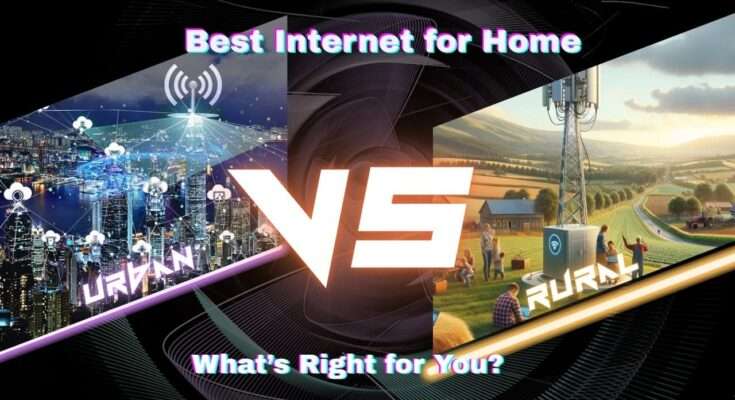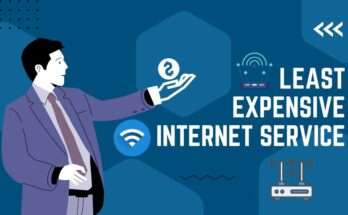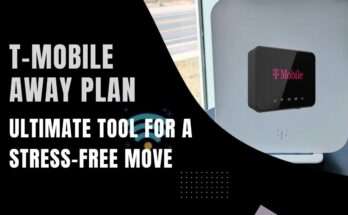Finding the top Internet for your home depends primarily on your location in a rural or metro region. Urban areas have activation to more efficient and quicker cable and fiber connections, whereas rural regions may depend on fixed wireless, DSL or satellite services. Each alternative differs in price, speed and presence, so knowing your special necessities and local provider alternatives is a way to obtain the perfect fit for smooth connectivity and worth. This article will provide the best Internet for home and its significance.
Best Internet for Home Across the United States Overview
Many users and experts consider AT&T Fiber the best Internet for working from home across the United States, thanks to its consistent high-speed internet service up to 5 Gbps, no contracts, unlimited data, and strong customer satisfaction ratings If AT&T Fiber is not present in your region, the best options involve Google Fiber in chosen cities and Verizon Fios in the Northeast, and Spectrum or Xfinity for efficient cable alternatives.
What is a Broadband Internet?
Already this year, the FCC has reevaluated the broadband speed between 25 Mbps to 100 Mbps. Maximum providers deliver affordable and the best Internet plans for home between 100 Mbps, but a family of 4 requires about 300 Mbps or more to manage slow connectivity for working online.
The FCC has assured that 20 Mbps by 100 Mbps fixed broadband service is not implemented to almost 75 of Americans. Remote regions and Tribal lands have importantly trailed more urban regions with almost 28% of users residing in rural regions and almost 23% of users residing in Tribal regions that miss activation to 100 mbps by 20 Mbps fixed broadband services.
Internet Residents Across the United States
The number of users living in any special region never details how quickly the Internet connection will be. The average download speed for a 50,000 to 1,00,000 crowded region is 179 Mbps than 124 Mbps for a region with a 5,00,000 to 10,00,000 population.
State Internet Speed than Population Density
Washington is located in 68 square miles with 11,535 residents per square mile, which makes it a heavily crowded region across the United States. This lands robustly with an average Internet speed of 142 Mbps. The capital of the nation has 100% cable or fiber Internet presence with more than 100 Mbps download speed, with fixed wireless presence at 68%.
Virginia features the quickest state average speed at 198 Mbps, with 223 residents per square mile. The State has a 92% connection availability cost for fiber and cable, more than 100 Mbps. Fixed Wireless more than 100 Mbps presence is really low, up to 34%.
Internet Speed in Metro Regions
Multiple cities, such as Houston and San Diego, have more than 10 lakh residents within their borders. The cities, along with New York, Philadelphia and San Antonio, are below the national average Internet speed. The five big cities have different cable or fiber present between 25% to 100%. You will get the best Internet services for home.
| City | Average Download Speed | Percentage of Cable or Fiber Speeds | 100% Mbps |
|---|---|---|---|
| San Diego, CA | 168 Mbps | 93% | 100% |
| San Antonio | 162 Mbps | 94% | 100% |
| Houston, TX | 158 Mbps | 25% | 100% |
| New York, NY | 152 Mbps | 97% | 100% |
| Philadelphia, PA | 132 Mbps | 100% | 100% |
Urban Internet – Speed, Choice, and Reliability
Metro regions are usually overlooked for Internet options when we discuss Internet providers and techniques. Here, what you can assume for the best home Internet.
- Fiber-Optic Internet
Fiber Internet is the premier Internet package in urban setups that delivers speeds between 300 Mbps to 8 Gbps with multiple providers such as Google Fiber and AT&T Fiber. Fiber provides consistent download and upload speed, no imaginary downtime, low latency, which is perfect for gaming, streaming, distant work and smart home systems. Fiber’s presence is mostly restricted to big towns and cities. AT&T Fiber is the best Internet provider for your home.
- Cable Internet
From various providers such as Xfinity and Spectrum, cable Internet offers speeds between 300 Mbps to 1.2 Gbps. It is efficient and perfect for most families, despite the upload speed is steadier compared to fiber. Cable is a robust option for aspirants, households and professionals requiring continuous performance.
- 5G Home Internet
5G Home Internet technique is evolving like a robust option with providers such as Verizon delivering convenient establishment and huge speeds. It is particularly essential where fiber has not been approached yet, but phone coverage is robust.
- Pricing and Bundles
Metro users profit from reasonable cost, TV and phone bundles and quick promotions. Internet packages begin as low as $40 per month for cable and $55 per month for fiber with no contracts and limitless data.
Excellent For
- Families with different equipment and users.
- Online gaming, huge streaming and video discussion.
- Distant work and smart home integration.
Rural Internet – Coverage, Flexibility, and Adaptation
Remote regions encounter exceptional problems like some providers, restricted infrastructure and sometimes bigger prices. Below are your key and the best home Internet options.
- Digital Subscriber Line (DSL)
DSL Internet utilizes existing phone lines, which makes it broadly present in remote areas. It is more efficient compared to a dial-up connection, but steadier than fiber or cable with a 100 Mbps speed. It is perfect for email, basic browsing and light broadcasting.
- Satellite Internet
Various providers such as Viasat and Hughesnet offer the best Internet for home through satellite, approaching even the most rural homes. Speed will be between 25 Mbps to 150 Mbps, but latency is buffer that makes it less perfect for real-time video calls or gaming. Satellite internet is the only option where wired connections are not versatile.
- Fixed Wireless and Mobile Hotspots
Such alternatives utilize radio signals from phone networks or local towers. They are versatile and can deliver reliable speed if you’re within extent, but performance can be impacted by weather and distance.
- Fiber
A few remote regions are beginning to view fiber shifts, but the extent is still restricted. If present, fiber is the quickest and most efficient alternative.
Concerns
- Availability – All providers won’t serve every remote location. Always examine the extent before promising.
- Speed – Evaluate your family’s necessities. Its basic utility needs low speed, but different users or streaming require maximum.
- Data Caps – Multiple remote packages have data restrictions, increasing them can mean additional charges or increased speeds.
- Price – Remote Internet can be costly for steadier speeds because of infrastructure problems.
Excellent For
- Families with basic Internet requirements.
- Users in rural or unreachable destinations.
- Those who wish to manage price, efficiency, and speed.
Metro residents should find cable or fiber for the top presentation and worth. Remote consumers may require in managing presence, speed, and price, often depending on satellite, DSL or wireless formulas until infrastructure enhances. Always differentiate alternatives carefully, your destination is the highest factor in obtaining the top Internet for your house. To know more about the best Internet for working from home, get in touch with the Internet Cost Saver customer care number.
FAQs
Ans. Fiber Internet is the top Internet for the home.
Ans. Fixed wireless, DSL, satellite, mobile hotspot data, and dial-up connections are suitable for distant areas.
Ans. Broadband Internet access in remote regions enables aspirants to interact in accessing online resources, digital learning and contribute to imaginary classrooms.



